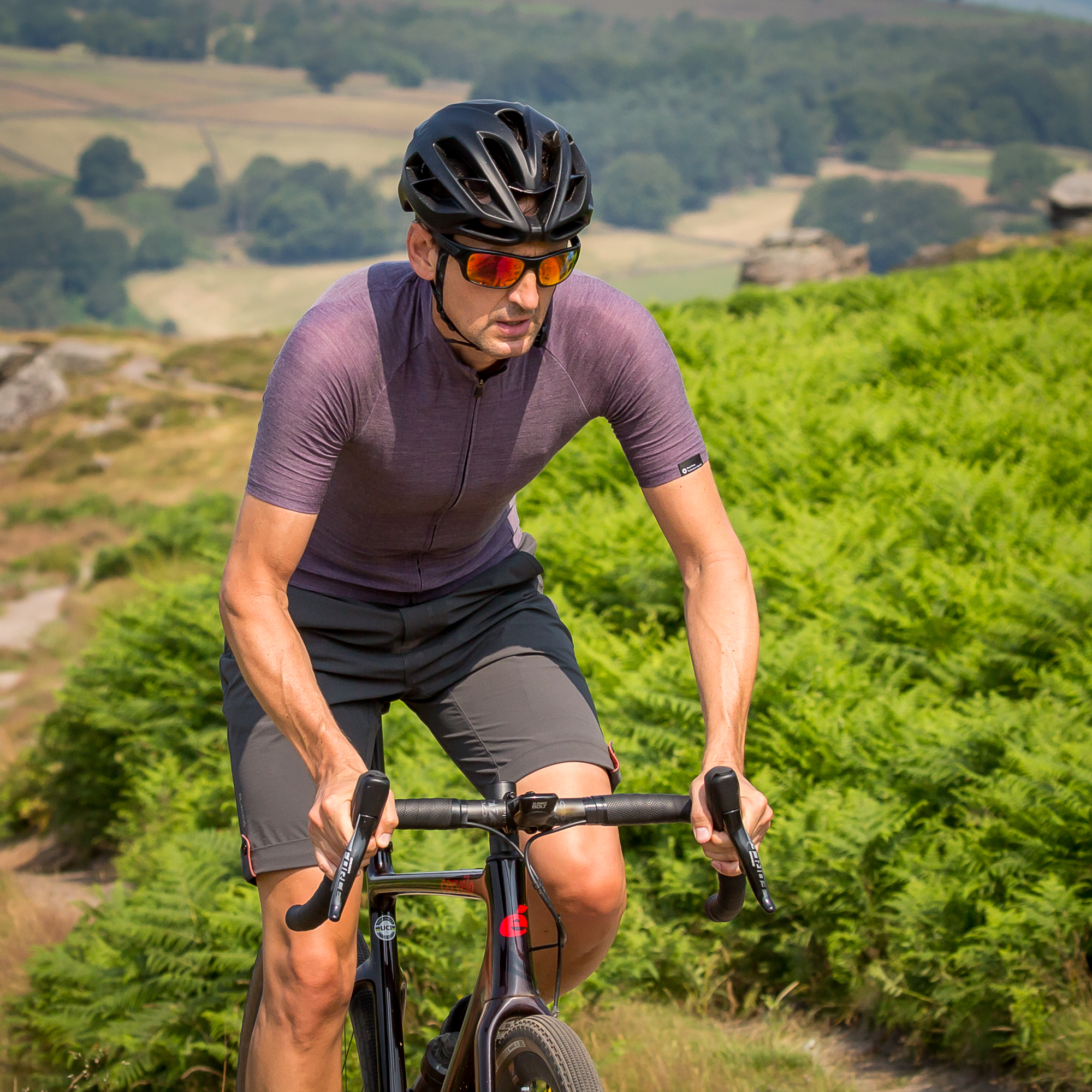Rudy Project Nytron helmet review: an everyday aero option
The Nytron is Rudy Project's entry in the burgeoning 'everyday aero' helmet category, combining ventilation and wind-cheating slipperiness
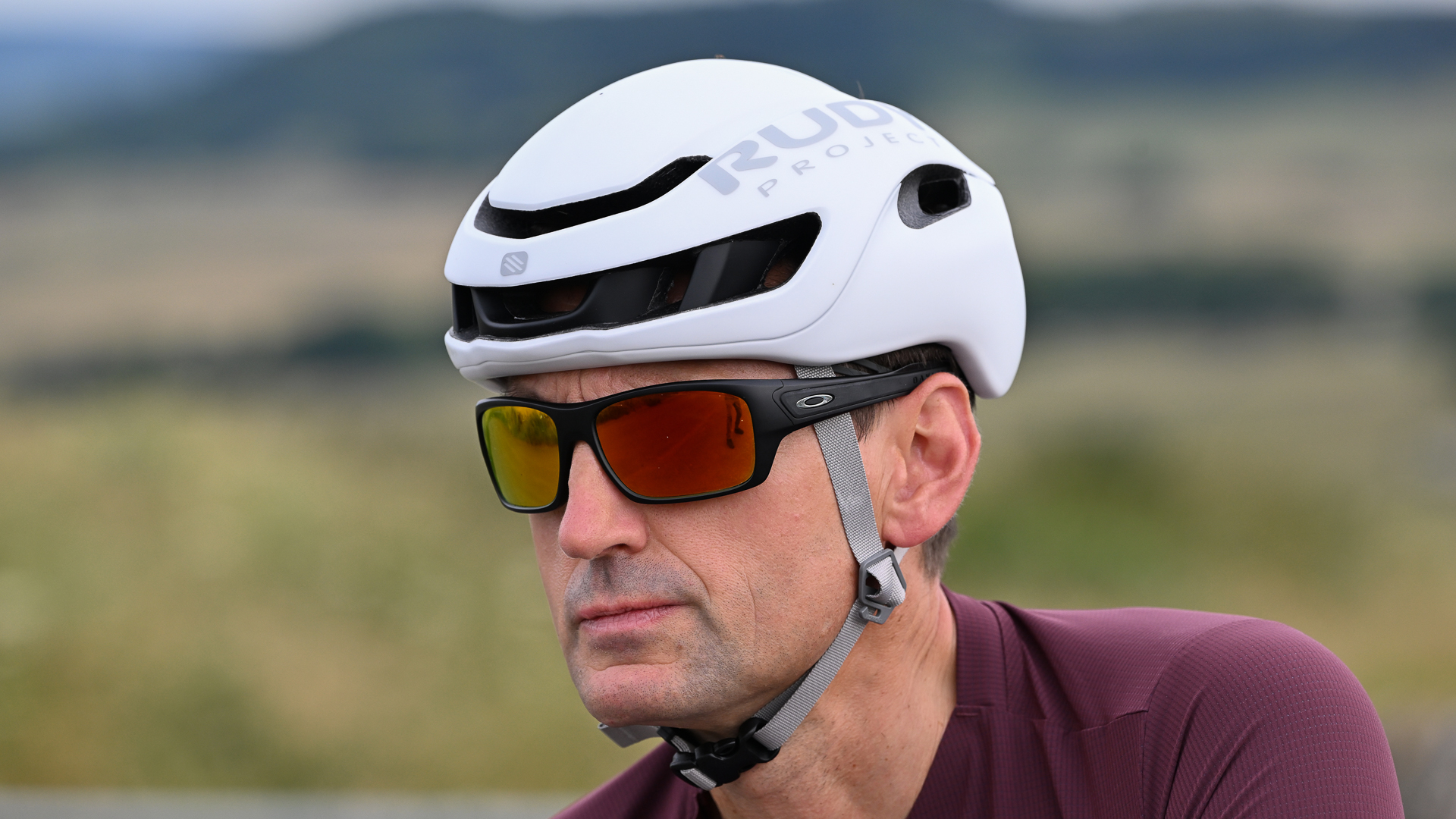
The Rudy Project Nytron is a reasonably priced, comfortable helmet which offers a combination of decent ventilation and wind-cheating design. However, it does lack Mips as part of its safety arsenal, whereas many of its competitors do offer this extra level of protection.
-
+
Reasonable price
-
+
Well ventilated for an aero design
-
+
(Unverified) aero credentials
-
+
Good range of colours
-
-
Only two sizes
-
-
No Mips
-
-
Cheap-looking silver on rear cradle
You can trust Cycling Weekly.

It seems to me that road bike helmets are, in some ways, similar to road bikes in so much as some are light, some are aero, and others claim to be light and aero at the same time. Rudy Project’s Nytron is in the latter camp, offering drag reduction and low weight/ventilation all in the same helmet.
For the aerodynamics, Rudy Project worked with Swiss Side, the experts in wind-cheating wheels, clothing and components, bringing some serious credentials into the mix. Furthermore, the Nytron has been used by Team Bahrain Victorious, adding in their real-world experience at the highest level of pro-racing.
Construction
As with most bike helmets, the Nytron is essentially a polycarbonate shell bonded to a foam liner. The shell extends all the way down to the bottom of the helmet and even wraps around the lip and extends up the inside by a few millimetres, providing good protection for the foam against accidental knocks.
Six large front vents, two side vents, two top vents and five exhaust ports make up the ventilation, and although that sounds like a lot, a significant amount of surface area is still solid and unvented.
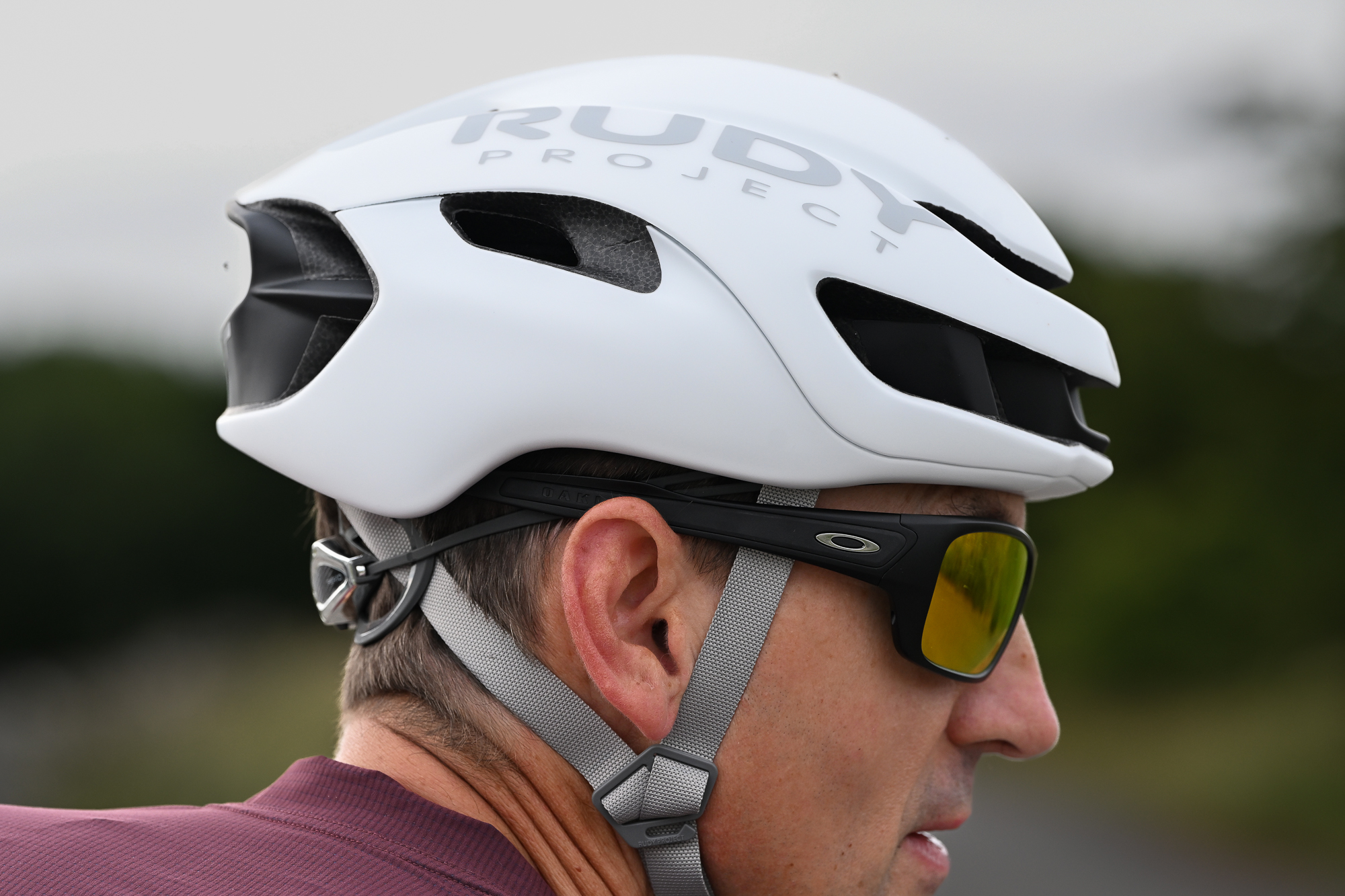
Plenty of vents on the Nytron
Internally, there is a slim cradle which runs from temple to temple via the rear adjustment mechanism with light grey padding, again fairly minimalist. Adjustment is done using the ratchet dial at the back, and the position of the occipital cradle can be moved up and down simply by pulling the attachment through its slot. The silver coloured plastic at the back of the cradle looks cheap to me - I would have much preferred this to be grey or black.
The sunglasses holder seemed secure enough that I was happy to ride with my glasses tucked away.
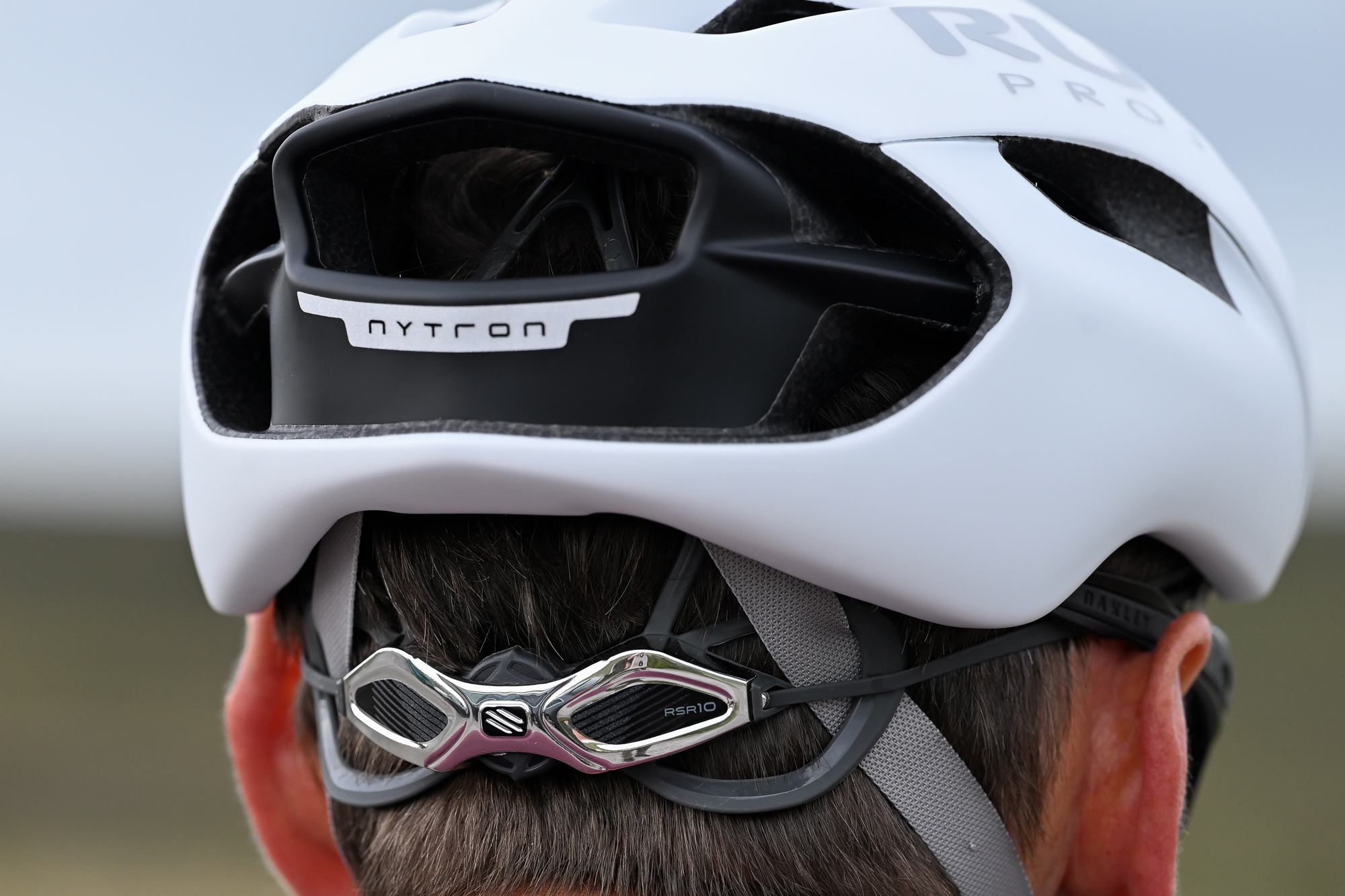
Big rear vents and comfy cradle, but the silver plastic looks cheap
Grandly titled ‘directional power flow channels’ or ‘grooves’ to you and me, funnel air from the front vents to the rear. The exact configuration of vents and channels has been designed to cause a Venturi Effect, reducing turbulence and drag as well as providing a cooling airflow. The outermost front vents and corresponding internal channel also serve to keep sunglasses secure if stowed on the helmet.
The latest race content, interviews, features, reviews and expert buying guides, direct to your inbox!
It was nice to see pale grey, rather than black, straps, laid out in the industry standard Y-shaped configuration. A couple of neat touches were the extra little tab on each yoke to help retain the straps and the rubber loop to hold the tails of the straps. A basic Fastext style buckle clips the straps together, although it would be more cohesive if this buckle were also grey rather than black.
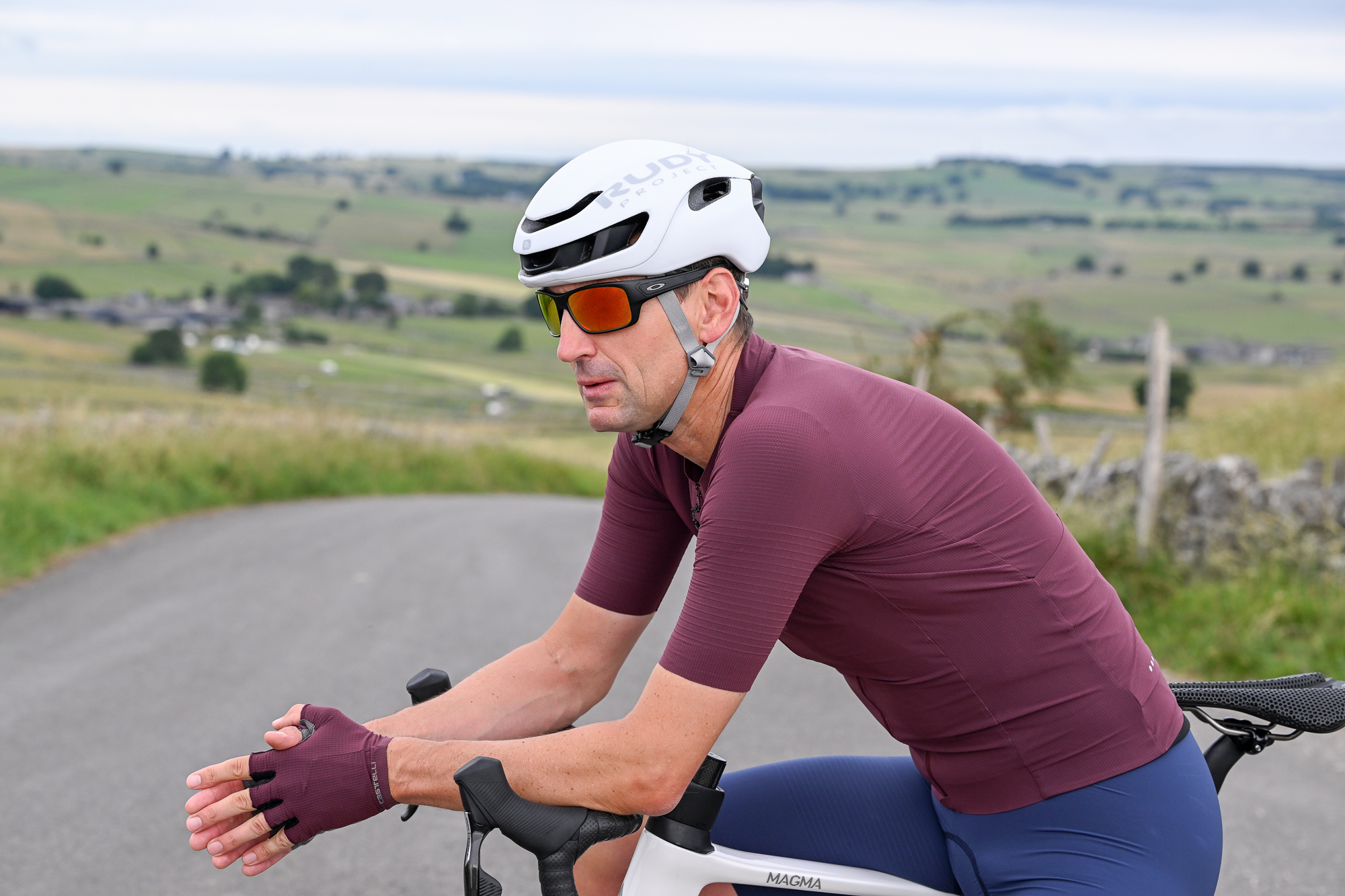
One element that is noticeable by its absence is Mips (Multi-Directional Impact Protection System), the feature which is included in many helmets these days and helps reduce rotational forces on the head, neck and brain in the event of an accident. However, the Nytron is EN 1078 certified and passes WG11 rotational impact tests, although this is not part of safety testing regulations.
There are only two sizes of Nytron available, Small-Medium (55-58cm) and Large-XL (59-61cm), but seven colours: Matte Black, Matte White, Shiny Blue Metal/Matte Black, Pink Flouro/Matte Black, Shiny Red Comet, Lilac/Blue Avio Metal Shiny and Champagne/Blue Avio Metal Matte.
Weight is given as 270g; my S/M helmet came in at 276g, which seems about par for the course, weight-wise these days.
The ride
As with many things cycling-related, the highest compliment that can be paid to a product is that I didn’t notice that I was using it.
As the evidence mounts that aero trumps weight almost every time in performance terms, I was very interested to try an aero helmet after a long line of light, very well-ventilated lids. I was a bit concerned that I didn’t ride fast enough to ‘activate’ the ventilation on this kind of helmet, and that on long, slow climbs I would overheat uncomfortably. Both worries were unfounded.
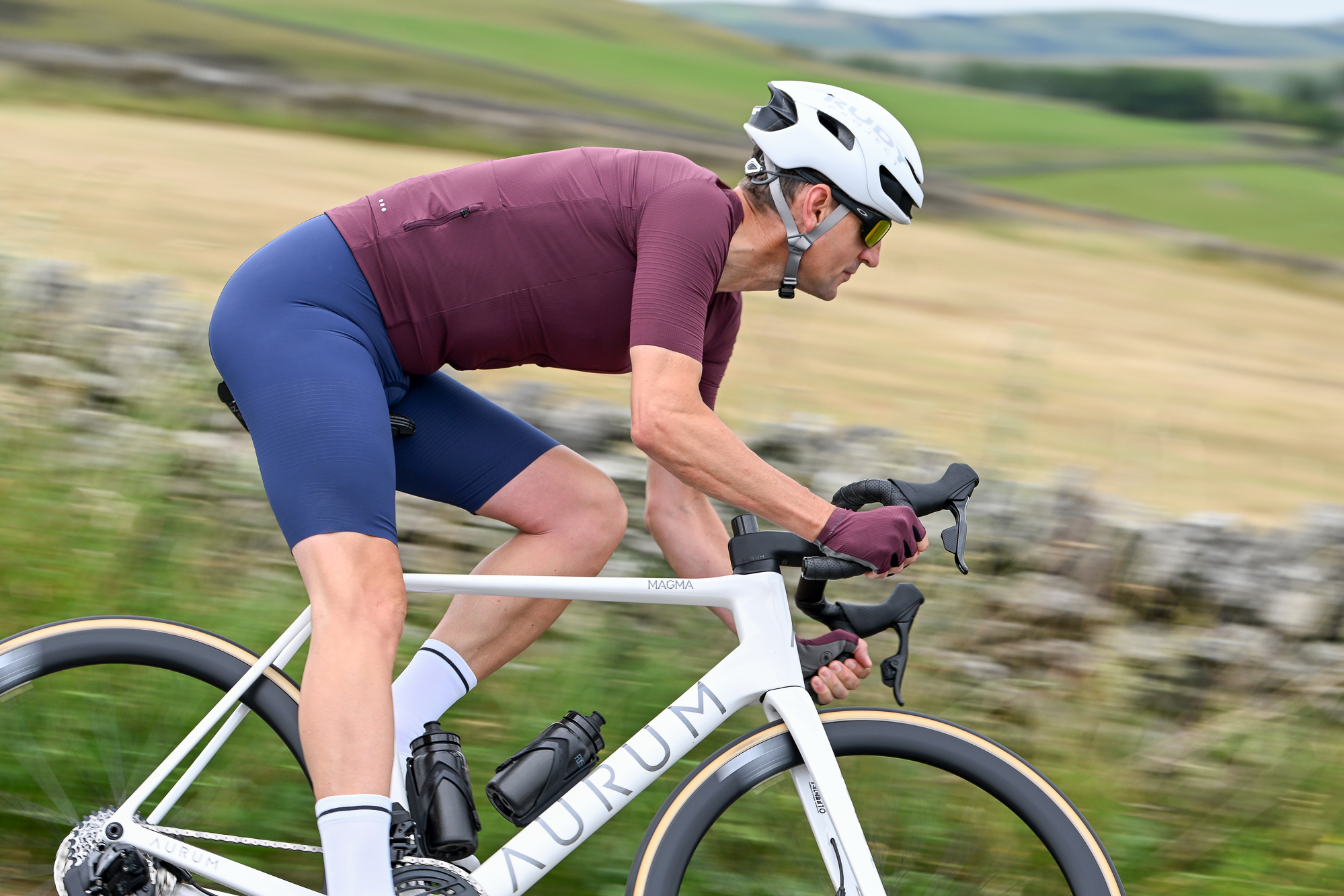
No problems with ventilation at speed
Recent weather in the UK has been unseasonably warm, with the mercury venturing north of 30°C, even in Yorkshire, yet I never once felt that the Nytron was stifling. It was also used on some big alpine climbs in Europe with even warmer temperatures, and again, no dramas. I was switching between the Fizik Kudo and the Nytron, and I honestly don’t think that I could have told you the difference in terms of temperature comfort.
I should probably caveat this with the fact that I don’t tend to run particularly hot, but an hour plus of climbing in full summer sun is still a pretty stern test for any helmet. I also don’t tend to sweat too much, either, but any I did produce was happily absorbed by the brow pads rather than running down my face, or maybe the ventilation was doing a fantastic job of keeping me cool. The pads are quite thin, though, so I don’t imagine that their moisture capacity would be too great, and their smart, pale grey colour already looks a bit grubby after just 1,000km or so.
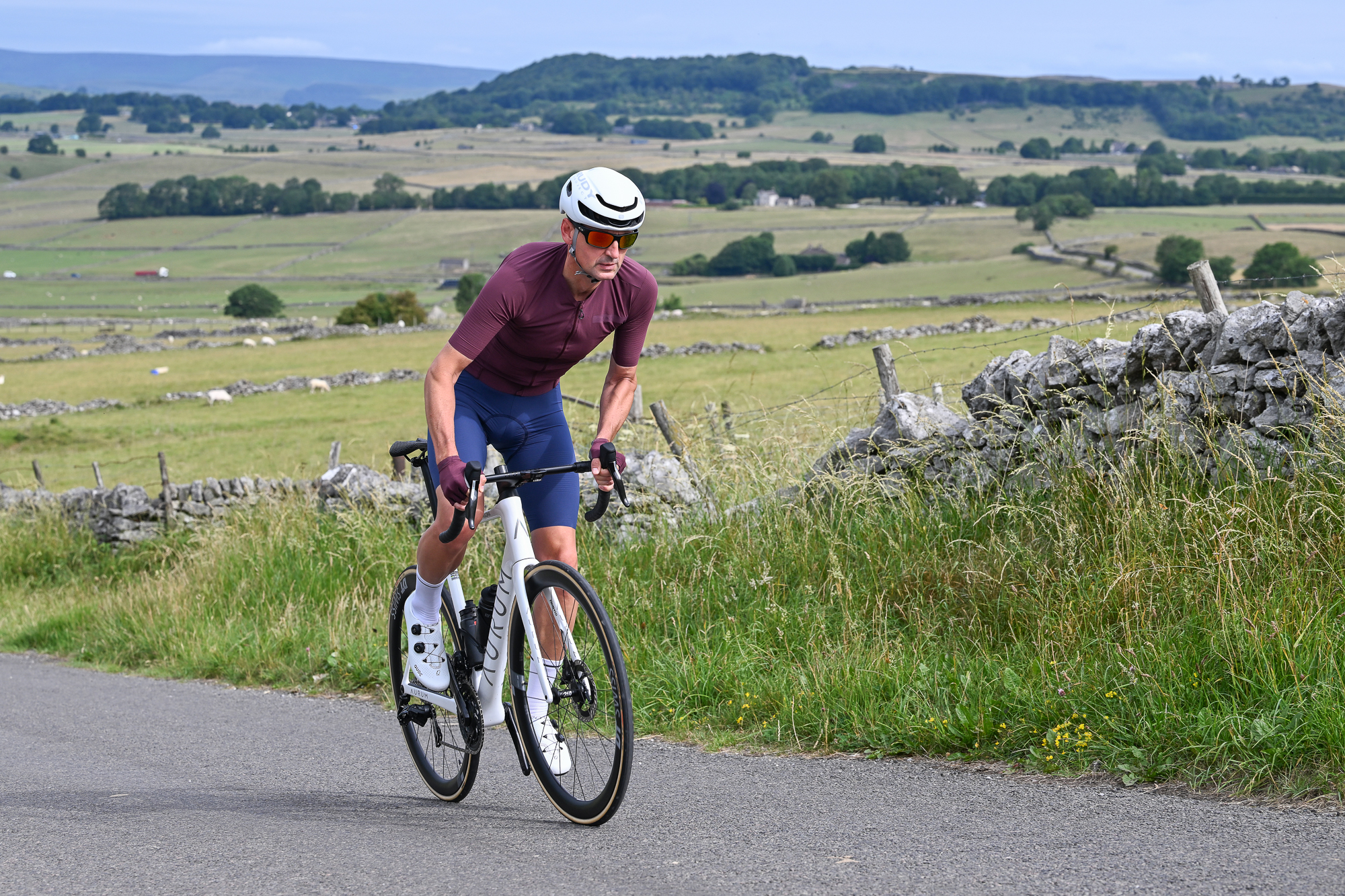
No problems with ventilation at riding uphill either
My head shape is quite round, which is to say wide at the temples but not particularly deep front to back, and the S/M Nytron felt like a good fit. Unlike the Fizik Kudo, there was ample room for a thin beanie or cap in cooler conditions, and there was no pressure at the temples. The rear cradle could have come a notch or two lower at the rear, but the helmet always felt secure and held in place - I didn’t feel the need to occasionally push the brow of it back up my forehead (as I did with the Kudo). Of course, these are fit compatibility issues and don’t necessarily make one helmet better or worse than another, and merely serve to emphasise the need to find the correct fit as well as the right features.
I cannot comment on the helmet’s aero credentials compared with other options, I don’t have a spare wind tunnel kicking around, and my legs are definitely not finely enough calibrated to tell the difference between one helmet and another in terms of drag. However, I do know that Swiss Side have an enviable reputation where aerodynamics are concerned, whether with their own products or with other brands', thanks to the ex-F1 engineers on the payroll.
The Nytron is not an out-and-out aero helmet; it is an everyday, every ride helmet which combines ventilation good enough for almost any conditions and a speed advantage too.
Value and conclusion
After a few reviews where the product's high price overshadowed the experience, I am pleased to say that this is not the case with the Rudy Project Nytron. At £190, it is not bargain basement, but neither is it in any way expensive. The combination of proven comfort and ventilation, along with claimed aero benefits, is quite a compelling one, and much like bikes such as the lightweight aero S-Works Tarmac SL8, they offer a cake-and-eat-it situation
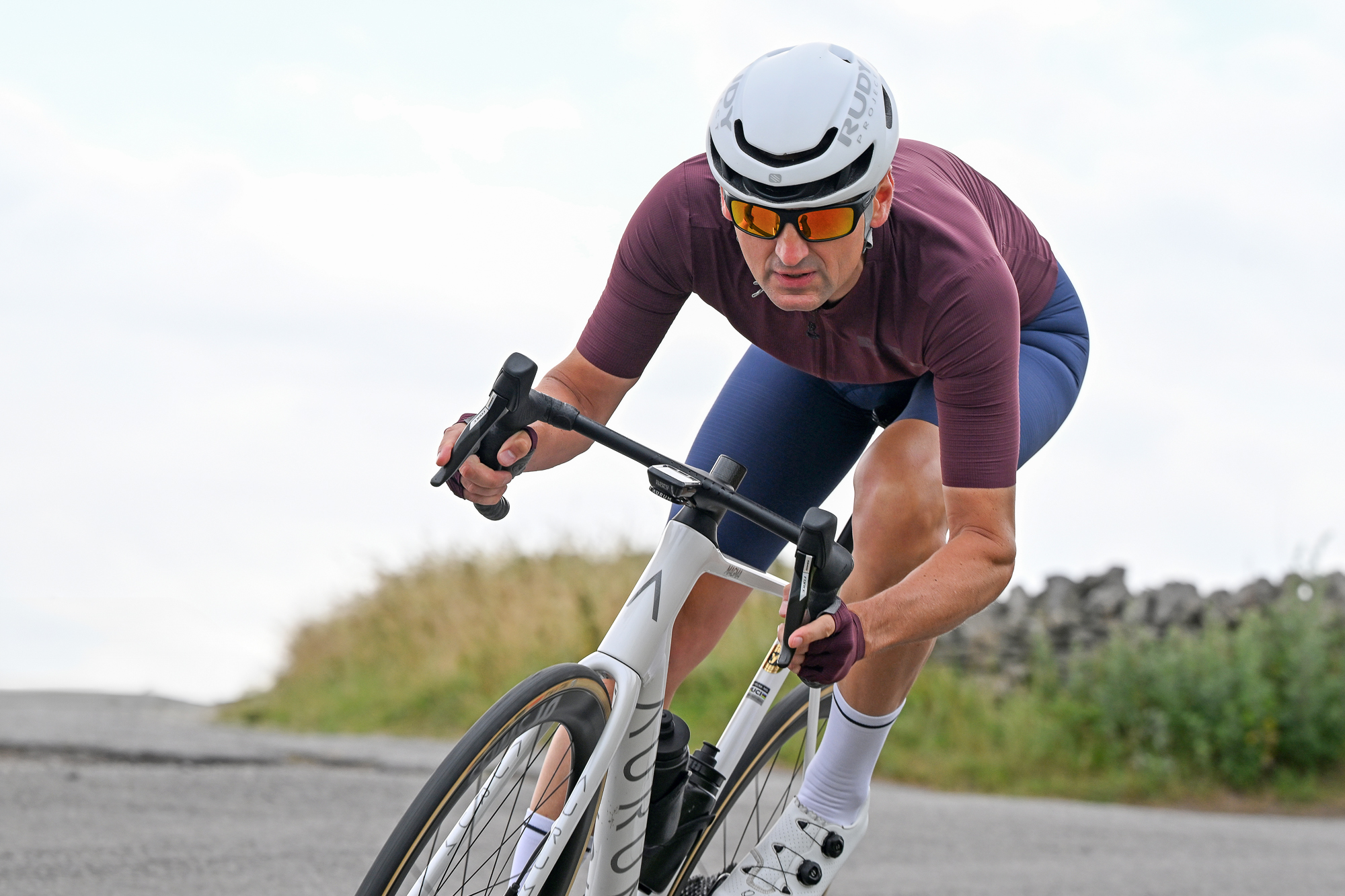
The Nytron is a fine, all-round helmet that offers speed, venting and comfort
The Nytron is cheaper than the Abus Gamechanger and the S-Works Evade, for example, both of which offer the same mix of attributes, and for me at least, it proved extremely comfortable. However, both the aforementioned helmets include Mips, whereas the Nytron does not, and above all else, a helmet is worn for safety, so it loses a point there.
Aside from that, the Rudy Project Nytron is a sound option - comfort, speed and a reasonable price.
Tim Russon is a writer and photographer who has worked in the outdoor and cycling industry for over 20 years. He can’t remember a time when he didn’t own a bike and has road, gravel, mountain and retro bikes in the shed. His favourite place to ride is the Dolomites, a simply stunning area which has breathtaking views and incredible roads combined with lovely food and great wine.
He prefers long, hot climbs in the big mountains, but as he lives on the edge of the Peak District he has to make do with short, cold climbs most of the time instead.
You must confirm your public display name before commenting
Please logout and then login again, you will then be prompted to enter your display name.
